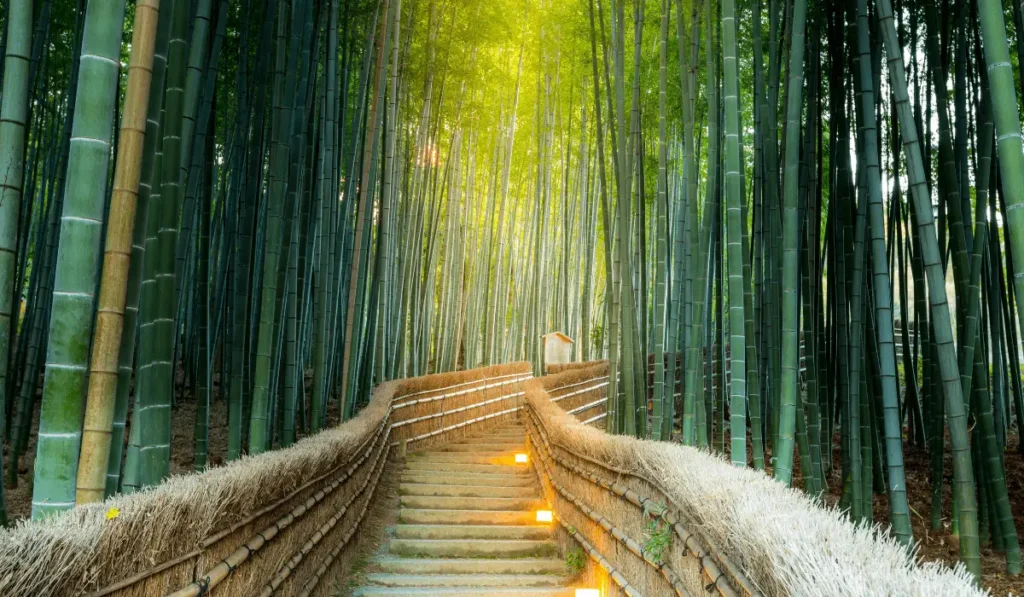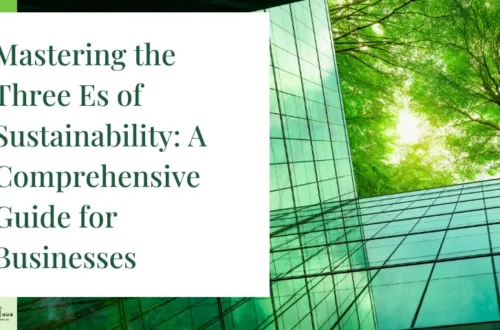Explore the Limitless Creativity of Bamboo: 1000 Things to Make from Bamboo

With its versatility and sustainability, bamboo has gained popularity among eco-conscious people and craft enthusiasts. Bamboo’s fast growth and abundant supply has attracted attention as a potential replacement for traditional materials across various industries. Explore the amazing properties of bamboo and the infinite possibilities that it provides in terms of crafting.
A Sustainable Marvel
Bamboo has a rapid growth rate and is known to be able to regenerate rapidly. Bamboo can grow to full height in just a few short years, unlike hardwood trees which take many decades to reach maturity. Bamboo is a great material for crafting because it doesn’t harm the environment or cause deforestation. Craftspeople who choose bamboo can help create a more environmentally friendly and sustainable future.
Endless Creative Possibilities
Bamboo’s versatility is limitless. Bamboo can be used to create a variety of functional and beautiful items, from small decor pieces to large furniture. The lightweight, sturdy and flexible nature of bamboo makes it perfect for furniture such as tables, chairs and shelves. Bamboo can be intricately weaved by skilled artisans to create baskets, lampshades and other decorative pieces.
Uniquely Beautiful
Bamboo’s natural beauty is one of its most attractive features. Bamboo’s unique grain and texture patterns can bring a sense of exoticism and elegance to your craft projects. Bamboo crafts, whether left untreated or stained, exude warmth and tranquility.
Material For All
Bamboo crafts are suitable for a variety of skill and interest levels. Bamboo crafts are suitable for all levels of experience and skill. Bamboo’s versatility makes it ideal for both simple crafts like coasters and wind chimes as well as complex ones like large architectural structures or intricate sculptures.
An Eco-Conscious Choice
Bamboo is a versatile material that can be used to create a variety of products. It also contributes to the sustainability of our world. Bamboo is a leading contender in eco-friendly materials due to its rapid growth rate and low environmental impact. Bamboo is a sustainable and environmentally friendly option that continues to be in demand as the need for eco-friendly alternatives grows.
Bamboo Crafts: A Thousand uses
Bamboo is the king of versatility. Bamboo is a sustainable plant that offers endless possibilities to create unique products. Bamboo can be used to create a variety of decorative and functional items, from furniture to decor to utensils.
Home Furniture and Decor
Bamboo furniture is eco-friendly and stylish. The natural beauty of bamboo and its durability makes it ideal for making pieces that last a lifetime. Bamboo tables, shelves, chairs and other furniture can add an elegant touch to any living area. Bamboo blinds, rugs and wall coverings instantly enhance the atmosphere of a room.
Kitchenware and Utensils
The material bamboo is perfect for creating kitchenware and utensils. Cutting boards, serving trays, and spatulas are made of bamboo because it is strong and resistant to moisture. Bamboo cutlery is available in sets which are both functional and aesthetically pleasing.
Fashion and Accessories
Bamboo is becoming a popular material in the fashion industry. Due to its softness and breathability, bamboo fibers have become increasingly popular. Bamboo handbags, sunglasses and watches are trendy, but they’re also an environmentally-friendly alternative to other materials.
Decorative and Artistic Pieces
Bamboo is a popular choice in artistic and decorative items because of its natural texture and grain. Bamboo sculptures and baskets are great for adding a touch of exoticism to your home. Wind chimes, mobiles and other bamboo products create soothing tones and can add tranquility and peace in your home.
Sustainable Building Materials
It is also a great building material. The strength to weight ratio of bamboo makes it a great choice for building. The use of bamboo in flooring, walls and structural elements can add a sustainable touch to any building project.
This is only the beginning of the many uses that bamboo can be put to. You can use this plant to unleash creativity, and help create a sustainable future. Bamboo crafts offer endless possibilities for DIY enthusiasts, artists, and eco-friendly product lovers.
Bamboo in Home Decor
It is not only a great material for crafting and building, but it can also be used to enhance your home’s decor. Bamboo’s natural texture can bring a sense of sustainability and elegance to your home. These are a few exciting ways you can incorporate bamboo in your home decor.
Flooring
The popularity of bamboo flooring has increased due to the durability, environmental friendliness and its aesthetic appeal. Bamboo flooring creates a warm and natural atmosphere in any room. Bamboo flooring is available in a variety of styles and finishes to complement traditional as well as modern interior design.
wall coverings
Bamboo wall coverings can be used to create a focal point. The textured panels give plain walls depth and interest. Wall coverings from bamboo are available in a variety of finishes, including a natural look and a stained one. They can turn your room into a tropical oasis.
Furniture
Bamboo furniture not only looks great but is also very functional. Bamboo furniture can be used to add elegance to any home. Bamboo’s natural patterns and tones make it an incredibly versatile material. It can be used in a variety of interior designs.
Room Dividers
Bamboo room dividers can be used to create different zones in a single room. They are versatile and can add privacy to any living area. Room dividers can transform any living space, whether you choose a Japanese shoji screen for the traditional look or a bamboo partition to give it a modern feel.
Accessory
Accessorise your decor using bamboo. Blinds and curtains made of bamboo can be used to provide privacy, while still letting in natural light. Bamboo mats and rugs add texture and warmth to the floor. Picture frames, lampshades, vases and other bamboo products can add a natural touch to your home.
Integrate bamboo into your decor to embrace its natural beauty. Bamboo offers endless options for eco-friendly living spaces. From furniture to wall coverings, it is a great material that can be used in flooring.
Also read: Top 3 Trees that Produce the Most Oxygen
Bamboo in Outdoor Spaces
Bamboo can be used for both indoor and outdoor decor. The natural beauty of bamboo, its durability and environmental friendliness make it a great choice for patios, gardens and other outdoor structures. Explore the many ways that you can use bamboo in your outdoor space.
Bamboo Fencing
Bamboo fencing can be a great way to create a peaceful atmosphere and privacy in any outdoor space. Bamboo fencing will add elegance to any outdoor space, whether it’s a patio or garden. The bamboo fence provides privacy, while still allowing for airflow and light.
Bamboo Pergolas
Bamboo pergolas are a beautiful focal point for any patio or garden. It not only provides shade but also gives your space a tropical, exotic feeling. Decorate it with jasmine and bougainvillea climbing plants to create an impressive visual display.
Bamboo Trellises
Bamboo trellises are a durable and long-lasting support for climbing plants. The bamboo trellises have a rustic and natural aesthetic, while still allowing the plants to grow and creating a vertical oasis.
Bamboo Garden Edging
You can use bamboo as an edger or border to separate different parts of your garden. The natural look of bamboo is enhanced by its sophistication. The bamboo garden edge helps to keep plants in place, and also prevents soil erosion.
Bamboo planters and pot stands
Bamboo planters can be used to enhance the aesthetics of your garden. These planters are not only a beautiful and environmentally-friendly option for displaying your plants, but they also give your garden a sense of height and depth.
Bamboo Outdoor Furniture
Bamboo furniture not only is environmentally friendly, but it’s also weather resistant and durable. You can add a comfortable and inviting seating area to your patio or garden with bamboo dining sets, lounge chairs, or other furniture.
Bamboo is a beautiful material that can be used to create outdoor areas. It also promotes a more sustainable, eco-friendly life style. Bamboo’s natural beauty will turn your outdoor space into a relaxing and serene oasis.
Also read: 8 Green New Year’s Resolutions to Make for a Greener Future
Bamboo Utensils and Kitchenware
Bamboo offers both practicality and aesthetics in utensils, kitchenware and other products. Bamboo is a great material for everyday kitchenware and elegant cutting boards.
Bamboo Utensils
Eco-conscious people who are looking to reduce their plastic consumption often choose bamboo utensils. Bamboo utensils are available in a variety of shapes and sizes, from spatulas and spoons to salad servers and tongs. They are not only durable, they add natural beauty to the kitchen.
Cutting Boards
The durability of bamboo boards is one of their main advantages. Bamboo’s hardness makes it resistant to warping and knife marks. Natural antibacterial properties make bamboo a safe and hygienic option for food preparation. Bamboo cutting boards also help to keep knives sharper for longer.
Bowls and Containers
Bamboo containers and bowls add warmth and elegance to any kitchen. These containers are easy to use and lightweight, so they’re perfect for daily use. Containers with lids made of bamboo are ideal for packing or storing lunches and leftovers. Bamboo’s natural patterns add an aesthetic and unique touch to any dining room.
Accessories and Cooking Utensils
Bamboo offers more than just spoons and spatulas. It also has a wide range of accessories and utensils that will enhance your cooking experience. In Asian cooking, bamboo steamers are used to steam vegetables, dumplings and other delicate food. Bamboo trivets protect your dining table and countertops while also adding rustic charm to your decor.
Also read: Be a Sustainable Superhero: 20 Easy Ways to Go Green Today
Bamboo Crafts For Kids
Kids can also be creative with bamboo. These bamboo crafts are educational and fun for children. These projects, which range from musical instruments to building blocks, will encourage your children to express their creativity and develop their problem-solving skills.
Building blocks
Bamboo building blocks will inspire your child’s imagination. Bamboo can be cut into different lengths to make a natural, eco-friendly set of building materials. Encourage children to build imaginative stacks and structures that will foster spatial awareness.
Musical Instruments
Bamboo is a versatile material that can be turned into a variety of musical instruments. This creates harmonies and an interactive environment. Make bamboo flutes with your children by creating fingerholes in a bamboo piece. You can make bamboo rainsticks for your kids by filling tubes with rice or small pebbles. This will create soothing sounds when you gently tilt the tube.
Toys and Games
The foundation of many toys and games can be bamboo. Create a marble run with bamboo by using the cut shoots of bamboo as tracks. Cut bamboo in different lengths, and then attach them to the base. Your kids can paint the keys of their xylophones to give them a unique touch.
Nature Inspired Art
Bamboo-inspired art is a great way to encourage your children to discover the wonders of nature. Create stamps from bamboo to use for printing or painting. Bamboo strips can be used to weave intricate patterns, using natural materials like leaves, feathers or ribbon.
Also read: 20 Practical Steps for Eco-Friendly Living: Your Guide to Sustainability
Bamboo Fashion Accessories
The use of bamboo is no longer limited to crafts and home décor. It has now made its way in the fashion industry and accessory world. Bamboo’s unique properties have been recognized by designers and artists, who have used it in their designs to create stunning eco-friendly and fashionable pieces.
Bamboo Clothing
Clothing is one of the biggest uses for bamboo in fashion. The fibers of bamboo are hypoallergenic and soft. They make great clothing. Blending bamboo fabric with cotton and spandex can create versatile and comfortable clothing such as dresses, t-shirts and activewear. Bamboo clothing is not only comfortable against the skin but also moisture-wicking, and has a natural odor resistance. This ensures freshness throughout the day.
Bamboo Jewelry
Bamboo is also used to make jewelry. Bamboo’s natural beauty and strength have inspired artists to design unique, eye-catching jewelry. The natural elegance of bamboo earrings, necklaces and bracelets can be added to your outfit with these accessories. Bamboo’s natural texture and color lend themselves to minimalist and detailed designs. Bamboo jewelry can be as simple as a bamboo hoop or elaborately designed, such as a statement necklace.
Bamboo Accessories
Bamboo is used for a variety of accessories, in addition to clothes and jewelry. The stylishness and sustainability of bamboo handbags has gained them popularity. They are perfect for special occasions or everyday wear because of their durability and lightweight. Bamboo sunglasses combine fashion and functionality. Bamboo sunglasses offer a stylish and environmentally friendly alternative to conventional eyewear. They feature unique grain patterns, and are made from eco-friendly material. With their eco-conscious design and natural wood finish, bamboo watches are also making a name in fashion.
Bamboo Construction and Architecture
With its strength and flexibility bamboo has become a popular and sustainable alternative for construction and architecture. Bamboo is a material that can be used for small structures or large buildings. It offers many advantages, making it a popular choice.
Bamboo’s Structural Strength
Bamboo is a structurally strong material that can withstand large loads. The tensile force of bamboo is similar to that of steel. This makes it a great choice for building. Bamboo’s flexibility makes it able to bend and not break, which is why it can withstand earthquakes.
Building Materials
As a construction material, bamboo can take on many forms. Strong and lightweight bamboo poles can be used to support columns and beams. The poles are easily connected using modern connectors or traditional lashing methods. The bamboo strips are also woven to create panels that can be used for floors and walls. They provide both strength and beauty.
Sustainable Architecture
Bamboo in architecture is a sustainable and environmentally friendly material. Bamboo grows up to one meter per day in some species. The cultivation of bamboo requires little water or pesticides. It is therefore a more environmentally friendly alternative than traditional building materials.
Also read: What Does It Truly Mean to Be Environmentally Conscious?
Bamboo as Art and Sculpture
Artists and sculptors have been captivated by the natural beauty of bamboo and its versatility. Bamboo is a versatile medium that allows artists to express themselves in countless ways. From stunning installations to intricate sculptures, it offers an unmatched artistic experience. Explore the many ways that this amazing plant can be used to create art.
Traditional Bamboo Crafts
Bamboo is integral to many traditional crafts. With age-old methods, skilled artisans produce delicately woven baskets and intricate screens as well as finely crafted furnishings. Bamboo’s flexibility and strength allow intricate designs to be created and for structural integrity. Bamboo is a rich cultural heritage and plays a vital role in these traditional crafts.
Whimsical bamboo installations
Bamboo installations are a way for contemporary artists to push their creativity. Large-scale art often combines nature with architecture to create structures that seamlessly integrate into their environment. These stunning works, from towering sculptures of bamboo in parks to immersive art installations using bamboo in galleries and museums, captivate the viewer’s imagination.
Sustainable Sculptures
Bamboo’s eco-friendliness is one of its greatest assets. This sustainable material is increasingly used by artists as a canvas. Bamboo sculptures are not only beautiful, but they also highlight the value of living sustainably. Artists use their art to promote awareness of the environment and our need to preserve our planet.
Inspirational Artists
Tanabe, Chikusen and Zhuang, Minghui, are renowned artists who have used bamboo’s artistic potential to create works of art that transcend the passage of time. Their intricate sculptures capture movement, emotion, and nature’s essence. They inspire aspiring artists by demonstrating the creative possibilities that bamboo offers.
Bamboo for Sustainable Living
Bamboo offers many environmental advantages, which makes it a great choice for sustainable living. Bamboo has many benefits that you can incorporate into your life.
Eco Friendly and Renewable Resource
Bamboo is one of the sustainable products available. Bamboo grows quickly and is harvested in 3-5 years, unlike hardwood trees which can take many decades to reach maturity. The rapid growth of bamboo allows it to be harvested frequently without destroying the ecosystem or depleting its resources. Bamboo is a renewable material, making it an environmentally friendly alternative to wood.
Carbon Sequestration
Bamboo has a significant ability to absorb large quantities of CO2 from the air. Bamboo forests are found to absorb up to four-times more carbon dioxide than any other species of trees, which makes them valuable for mitigating climate changes. You can reduce greenhouse gas emissions by using bamboo.
Soil Conservation and Water Efficiency
Bamboo’s extensive root system helps to control soil erosion, and retain water in the soil. The roots of bamboo prevent soil erosion, which makes it a great choice in areas that are prone to erosion. Bamboo requires less water than other crops, and it does not need pesticides, or fertilizers. This reduces the impact on the environment.
Biodiversity Protection
Bamboo forests are essential habitats to many species including pandas, which is an endangered animal. Conserving and expanding the bamboo forest can protect biodiversity and help restore ecosystems. Supporting bamboo products indirectly contributes to conservation efforts.
The Versatility of Sustainable Products
Bamboo is an eco-friendly raw material that can also be used for a variety of products. Bamboo is a versatile material that can be used for countless products, from furniture to flooring and textiles. The products not only look good but are also durable.
Bamboo is a great material for sustainable living. It’s versatile, eco-friendly and has many benefits. You can help create a more sustainable and greener future by choosing bamboo.
DIY Bamboo Projects and Techniques
This section is for those who are fascinated by bamboo’s versatility and want to explore their creativity. Prepare to learn how to work with bamboo and create beautiful and sustainable projects. These step-by-step tips and instructions will allow you to unlock bamboo’s full potential, whether you are a novice or an experienced crafter.
How to Choose the Best Bamboo
It’s crucial to select the correct bamboo before you begin your project. Search for straight bamboo poles, which are sturdy and without cracks. The diameter and length should be based on the project. Bamboo comes in a variety of sizes and thicknesses. This allows you to design projects on different scales.
Cutting Bamboo
You’ll also need pruning shears or a saw with a fine blade to cut the bamboo. Mark the length you want on the bamboo. Cut the bamboo along the line marked. Cut evenly and smooth to get a clean finish.
Shaping Bamboo
There are several techniques that you can employ to help you shape bamboo. You can use a propane or heat gun to gently bend or curve the bamboo. Heat the bamboo slowly and then bend it to the desired shape. Keep it in the desired shape until it has cooled and retained its form.
Steam bending is a great technique for creating more complex shapes and designs. For a soft bamboo, steam it for an hour. After that, gently bend the bamboo into desired shapes and fix it until it sets.
Joining Bamboo
There are several ways to join bamboo poles. Lashing is a common method of joining bamboo poles. It involves binding them together with strong wire or twine. Wrap the twine around both bamboo poles tightly, then wrap it crisscross-style to secure.
You can also use bamboo pegs or dowels as a jointing method. Insert the bamboo dowels into the holes you have drilled in the poles. Use glue to strengthen the connection and increase stability.
Final Touches
You may wish to add a protective finish to your bamboo project once it is completed. This will enhance the appearance and increase its durability. Use a clear oil or varnish to enhance the natural beauty of bamboo and protect it from wear.
Also read: The Easy Beginner’s Guide to a Sustainable Lifestyle
How to maintain bamboo crafts
Proper care and maintenance is essential to ensure that your bamboo creations last a long time and maintain their natural beauty. Keep your bamboo crafts in great condition by following these guidelines and tips.
Cleaning
It is important to clean your bamboo products regularly in order to eliminate dust and dirt. To remove any dirt, use a soft brush or cloth to wipe it away. Use a soft cloth or brush to gently wipe away any debris.
Avoid Direct Sunlight
Bamboo has a natural resistance to fading, however prolonged direct sun exposure can lead to discoloration. Keep your bamboo craft away from direct sunlight or windows. Consider using UV-protective window coatings or coverings to reduce damage if you can’t avoid direct sunlight.
Prevent Moisture Damage
It is important to keep your bamboo crafts away from excessive moisture or high humidity. Place them away from areas that are prone to high levels of humidity or water spills, like bathrooms and kitchen sinks. To prevent mold or warping, dry your bamboo crafts immediately if they get wet.
Refinishing and Polishing
Bamboo can lose its shine over time. You can restore the natural shine of bamboo by using a wax or polish made specifically for it. Use a soft, clean cloth to apply a little wax or polish. Rub it gently onto the surface. For best results, follow the instructions of the manufacturer.
Storage
When storing or avoiding bamboo products, keep them dry in an area that is well ventilated. Basements and attics that are damp can encourage mold growth. To prevent dust from accumulating, cover your craft with a protective cloth.
Check for Damage
Check your bamboo craft regularly for signs of wear or damage. Look for cracks, loose joints or splinters. Repair any damage immediately using the appropriate adhesives, or contact a bamboo crafts expert.
Follow these simple care and maintenance tips to ensure your bamboo products remain functional and beautiful for many years. Bamboo is a natural material that has a long-lasting beauty.
Conclusion
Bamboo offers creative and innovative possibilities that are endless. We have shown you how versatile bamboo is and the amazing range of products that are made from it. Bamboo crafts are available in a variety of styles, from furniture to decor and utensils to accessories.
You can make your home unique by incorporating bamboo in the decor both inside and outside. Bamboo furniture, flooring and wall coverings can bring a natural touch to any space. Bamboo can also be used in outdoor areas to create pergolas, garden structures and fences.
Bamboo is a practical material that can be used in the kitchen. Bamboo utensils and cutting boards are a great way to showcase its aesthetics and functionality. Bamboo toys, building blocks and musical instruments are also great for kids.
Bamboo has made its mark in fashion and accessories, going beyond traditional crafts. This sustainable material can be used to make handbags, watches, sunglasses and more.
Bamboo’s eco-friendly and structural properties are demonstrated in the construction and architectural world. Bamboo can be used to create sustainable, innovative and durable designs.
Bamboo has also been embraced by artists and sculptors who have used its beauty and versatility to produce stunning sculptures, traditional crafts, and installations.
Bamboo is an excellent choice when it comes to sustainable living. Bamboo is an environmentally friendly resource. It grows rapidly and needs little maintenance. Bamboo is a renewable resource that can be used in crafts, everyday living and other projects to help make the planet greener.
The possibilities are limitless if you want to start your bamboo craft journey. Follow step-by-step directions and experiment with new techniques. Unlock your creativity by diving into the bamboo world.
You can enjoy the satisfaction that comes from creating unique, sustainable products while also reducing your environmental footprint. Your imagination is the only limit to what you can do with bamboo.





